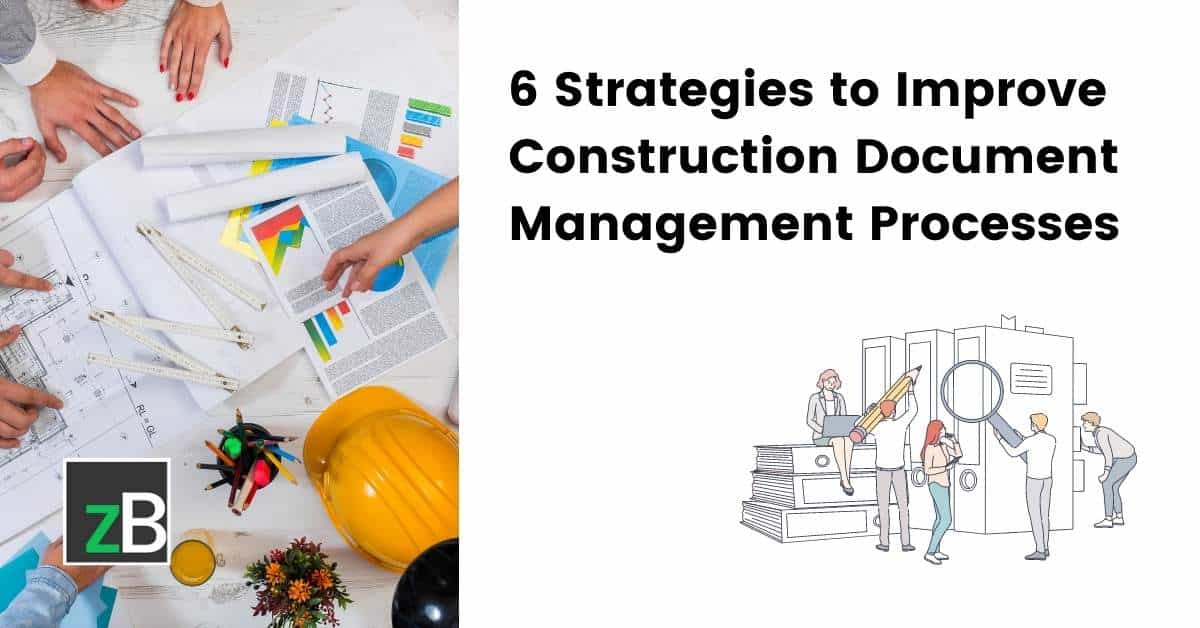Enhancing Workflow Efficiency: Engineer's Professional Techniques for Building And Construction Paper Administration
In the realm of building style and construction, the thorough monitoring of files stands as a keystone for job success. Engineers utilize various methods to enhance operations efficiency and simplify building and construction paper management processes. From experienced organization strategies to the integration of joint platforms and the execution of secure information management options, architects navigate a complicated landscape of techniques and tools. Among this complexity, a choose couple of professional approaches have emerged as vital in optimizing workflow effectiveness. These methods not just ensure smooth project progression however likewise hold the vital to opening enhanced productivity and precision in the complex world of building and construction record management.
Secret Document Organization Strategies
When taking care of building and construction records, among the crucial methods that architects employ is developing a effective and systematic organization system. This system normally includes categorizing documents based upon their kind, such as drawings, specifications, contracts, and allows. By producing clear and unique groups, engineers can swiftly locate specific details when required, saving time and reducing errors in the building process.
Within each group, architects better organize records by creating subfolders or making use of numbering systems to denote variations or alterations (construction document management). This hierarchical structure makes sure that one of the most current and relevant information is quickly obtainable while maintaining a record of modifications made throughout the task timeline
Moreover, architects commonly make use of electronic document management systems that supply features like keyword search features, variation control, and access restrictions to improve organization and partnership among job stakeholders. These devices simplify the document access procedure, promote real-time updates, and assist in smooth interaction, eventually adding to the total success of the construction job.
Collaborative Platform Assimilation
To enhance record administration effectiveness in building jobs, designers perfectly integrate collaborative systems to boost communication and improve coordination among project stakeholders. By leveraging collective systems such as project monitoring software, cloud-based storage systems, and communication devices, engineers can develop a central center for all project-related files and interaction channels. These platforms enable team participants to accessibility, evaluation, and collaborate on documents in real-time, reducing hold-ups and the threat of errors connected with typical paper management approaches.
Collaborative platform assimilation also promotes openness and responsibility within the task team, as all stakeholders have exposure right into the most recent job updates and alterations. By streamlining interaction and file sharing, engineers can ensure that all employee are working from the most updated details, minimizing the possibilities of misconceptions or conflicts arising because of out-of-date records.
Additionally, collective systems make it possible for smooth collaboration between designers, service providers, customers, and various other task stakeholders, promoting a more natural and reliable task operations. By damaging down communication barriers and assisting in info exchange, engineers can drive performance and technology in building jobs, eventually causing effective job results.
Version Control Finest Practices
Carrying out efficient version control methods is vital for preserving paper precision and uniformity in building jobs. By establishing a important link clear system for managing alterations, task groups can guarantee that everyone is working from the most up-to-date documentation, decreasing the risk of mistakes and disparities his response during the building phase.
Among the vital ideal methods for version control is to assign unique identifiers per record variation. This can be accomplished by utilizing a numbering system or date stamp that plainly suggests the order of revisions. By plainly classifying each iteration, employee can easily track the development of the file and identify one of the most current version.

Automation Tools for Effectiveness

File control software application, like Procore or PlanGrid, systematizes project documentation, making it quickly obtainable to all stakeholders. These systems permit for real-time collaboration, version control, and automated backups, securing versus information loss. In Addition, Structure Details Modeling (BIM) software automates the generation of construction drawings and ensures that changes are synchronized across all relevant documents.
Integrating automation tools with cloud storage space solutions even more improves availability and security. By automating the document management process, project teams can focus their time and effort on value-adding activities, eventually enhancing efficiency and project outcomes.
Secure Information Monitoring Solutions
Properly handling and safeguarding task data is paramount in the building industry find out to make sure discretion and stability throughout the task lifecycle. Architectural firms can make use of encrypted cloud storage services to firmly store and share task files with accredited personnel.
Moreover, making use of digital legal rights monitoring (DRM) tools adds an added layer of security by stopping the unapproved distribution or replication of job records. Normal data backups are important to mitigate the risk of data loss because of unpredicted circumstances like hardware failures or cyber-attacks. Collective systems with integrated safety and security functions enable seamless communication and documents sharing amongst job employee while maintaining information honesty.
Verdict
In conclusion, executing essential file organization methods, integrating collective platforms, practicing version control best practices, utilizing automation devices, and taking on safe and secure information monitoring remedies are essential techniques for enhancing workflow efficiency in construction document management. These expert approaches can simplify processes, improve communication, make certain precision, and preserve data security throughout the construction task lifecycle.
In the world of architectural design and building and construction, the thorough administration of files stands as a keystone for task success. These methods not only ensure smooth task progression but additionally hold the crucial to unlocking boosted efficiency and precision in the detailed realm of construction file management.
To maximize file management effectiveness in construction tasks, architects flawlessly integrate joint platforms to boost communication and simplify sychronisation amongst job stakeholders. These systems allow group members to accessibility, review, and team up on documents in real-time, minimizing delays and the danger of mistakes associated with typical file monitoring approaches.
Using automation devices in construction paper monitoring substantially enhances effectiveness and simplifies processes for job groups. construction document management.